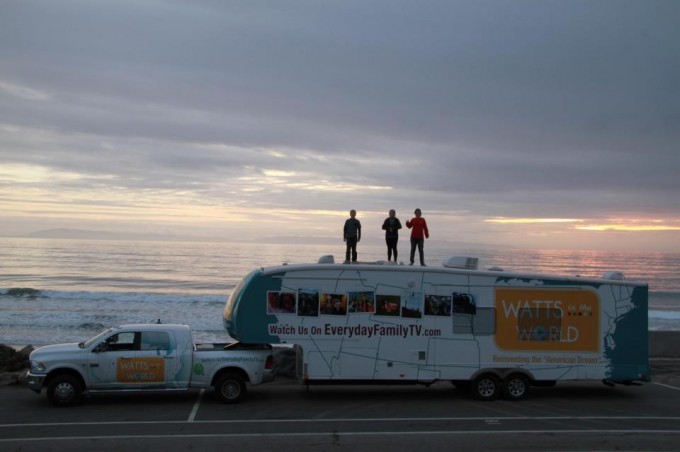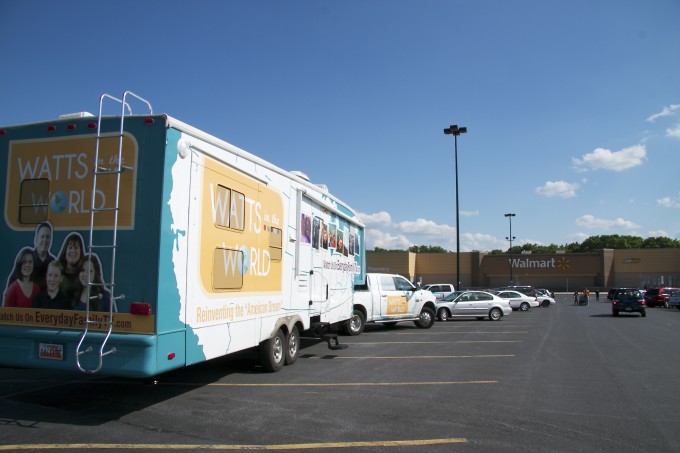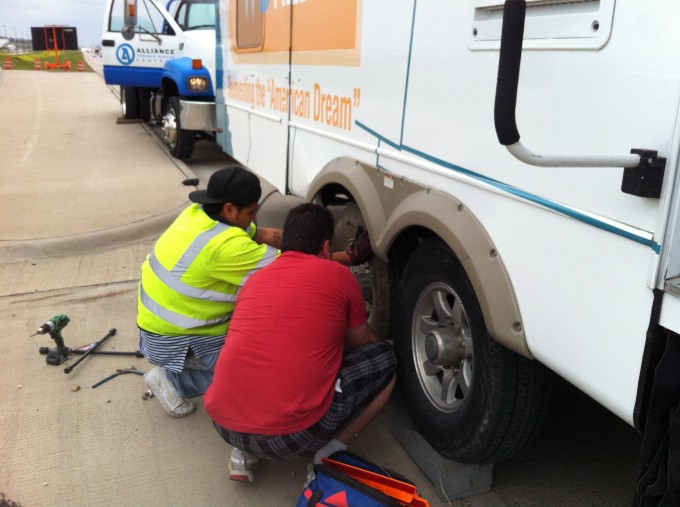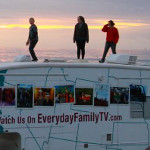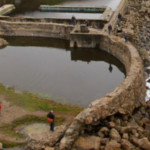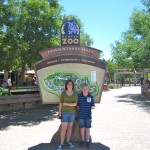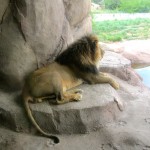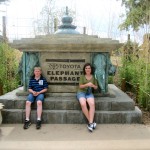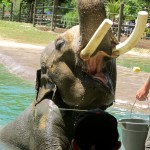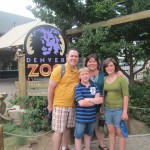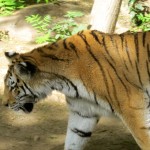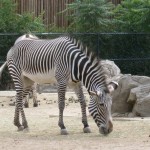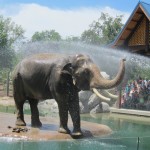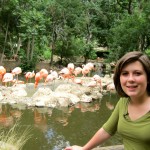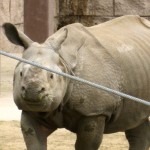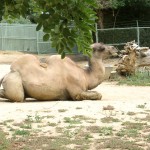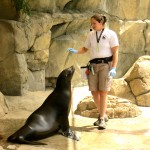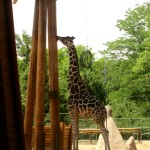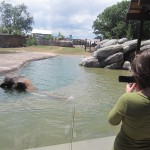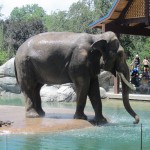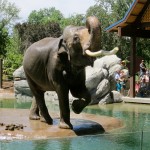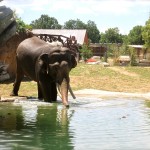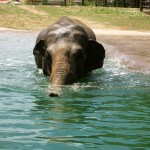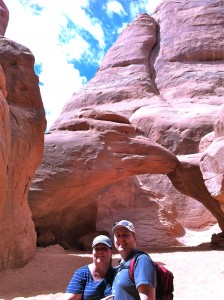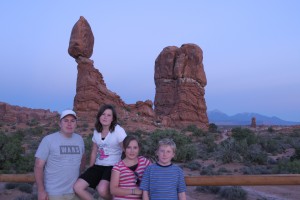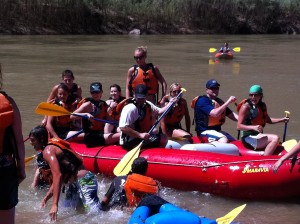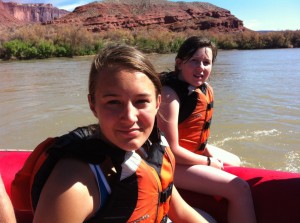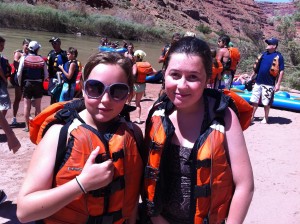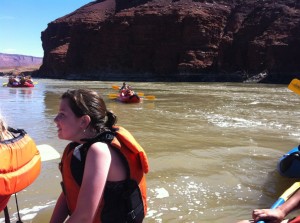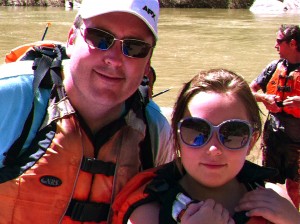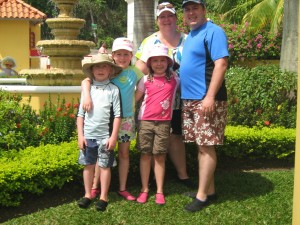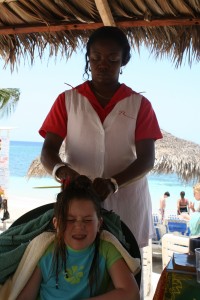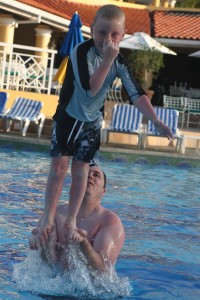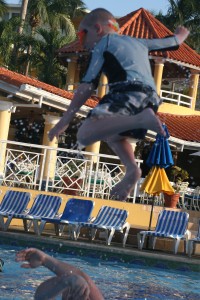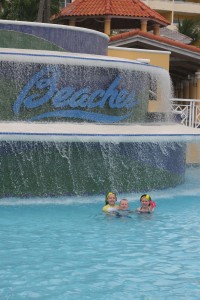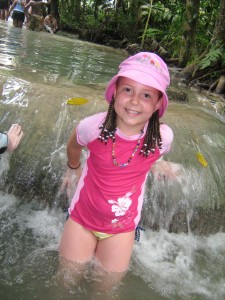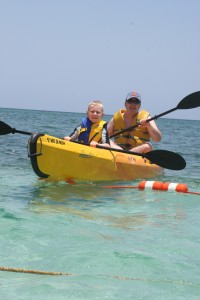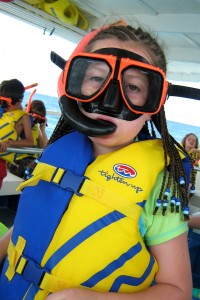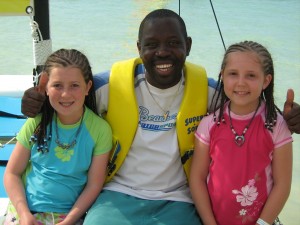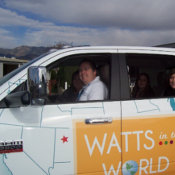Things I Never Did Before Travel
Travel opens up numerous opportunities to explore new lands and new parts within ourselves. Each new adventure we embark on changes us in small ways. I’ve been mentally cataloging some of the ways our family’s small, daily tasks have been altered by full-time RV travel. Life inside a rolling 36 foot box can’t, and shouldn’t be, the same as living in a bricks ‘n sticks back home.
Here’s just a few of the things I’ve been reflecting on this week.
Before travel I never:
Thought about Finite Resources-
Of course when I lived in a house I tried to be mindful of how much energy or water I was consuming so that I didn’t have to pay a high utility bill, but I never thought about it in terms of their being a limit to it. The RV has a finite amount of water it can hold, and electricity is only available if we buy it (stay at an RV park) or run our gas generator, which we can only store a few gallons at a time.So we quickly became aware of how much we use on a daily basis and we’ve grown accustomed to the quirky changes our daily routines have made.For example:
- Amps have their limits. Usually we have to turn off most the lights to run the microwave or blow dry our hair. AC won’t work off a battery. I know more about kilowatt usage, and acceptable power payloads than any other mom I know.
- Water is precious commodity- 5 showers and 1 round of dishes will completely fill up our grey tank, so sometimes we shower every other day to stretch out our water tanks. Every time we wash our hands or flush our toilets, we are consciously aware that we are that much closer to needing to find a dump/fill station.
- Free wifi is a premium-We try to only use our portable WiFi hubs for work or online school, so we are constantly on the hunt for free wifi we can use for recreational surfing, watching TV online, etc.
- Laundry- Machines aren’t always available, so we can’t just throw a load in whenever. We’ve learned to wear things more than once, or make sure it is indeed dirty before haphazardly throwing it in the dirty clothes basket.
- Sewage. Not a pretty subject, or something I ever thought about back home. I just knew when I flushed it went off to some faraway place that I never had to worry about it. Now that we are in charge of disposing of it in designated places, we’ve become keenly grateful of modern plumbing, and empathetic of those who live in worse sanitation circumstances than this.
Used public resources regularly
Living in a traditional home we are more autonomous and self-contained. Being on the road we’ve needed to rely on outside resources to get some of our needs met.
- laundry mats- Never used them before, but are a great way to get 6 loads done at once. Not as scary as I’d perceived, and met some really nice people in them.
- parking lots- Didn’t realize people slept in store parking lots, or that I’d be joining them several nights each month.
- campground showers- Showering in a public bath house would’ve been at the very bottom of my comfort list before full-time travel. But now, it’s the only time I get to linger in hot water and take the time to shave my legs. (remember the limited RV water?)
- library- Sure I went occasionally to pick up books for my kids, but I never hung out there. Now, we frequent them in order to get school work done or print stuff off the computer.
- Chain stores-(starbucks- B&N, Apple store, McDonalds) Once again I’d only visit these placed if I had something specific to buy, but now they are staples in our weekly schedule as they offer free wifi and it’s sometimes easier to spread the kids out in a more spacious environment, and let them tackle their work load. They’ve become good at self-monitoring their learning and schedules.
An unexpected side benefit of our travels is that I believe these experiences have made them more adaptable and resourceful perhaps than their same-aged counterparts. When the time comes I’m confident they’ll be ready for college, missions, voluntary service, marriage, travel and whatever the future holds for them.
Grateful for the really small things
- Quarters- I never gave a second thought to loose change before now, but quarters have become a precious commodity in our household. Between laundry and toll roads, quarters pass through our hands like water. Finding one in my the bottom of my purse is as delightful as discovering a treasure chest.
- Streets w/o low branches- Visually, I love driving down tree-lined streets and basking in the beauty of the mature trees. As co-pilot of a 13 ft. tall vehicle, it can be a nightmare navigating through streets riddled with low hanging branches that are begging to rip through the roof of the RV. I thank the heavens every time we turn down a residential street that’s open and clear.
- Towns w/o low bridges- Growing up in the Southwest it’d never occurred to me that low bridges would become my biggest nemesis once we crossed into the Mid-west and East coast. Most of our travel nightmares have been caused by low bridges, so I say a silent prayer of gratitude in each city we don’t have to worry about clearance issues.
- Tires- They are an unglamorous part of any vehicle, but the work horse in any situation. We’ve put ours through a lot- Numerous surfaces, weather conditions, and situations. Usually they come out ok, but after 23, 000 miles, 4 flat tires and a cracked rim, I’ve come to appreciate and think about them more now than ever before. Tires are my friends!
These are just some of the ways my awareness levels have been raised through our travels. Each adjustment has brought it’s own teaching moment, and I’m grateful for what traveling has taught me and given my family.
What are some things you’ve done, or do now, that you never did before traveling? I’d love to hear your responses!
Why the Arizona Meteor Crater Rocks…
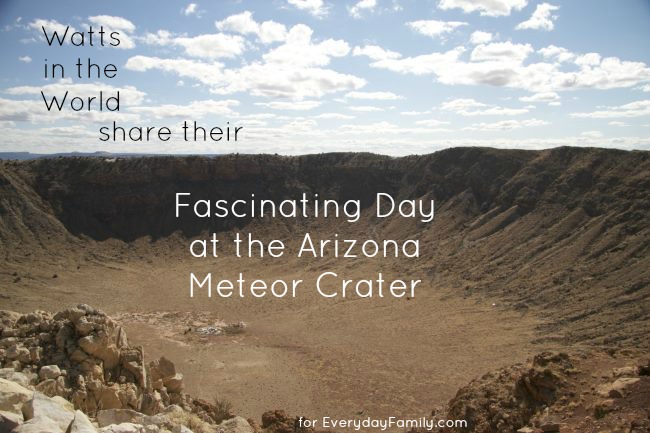
The Barringer crater been touted as “The best preserved meteor crater on earth”, and I hoped my kids would find it a worthwhile stop. Luckily the weather held out and we were able to visit northern Arizona on one of the few weeks it wasn’t snowing in February.
Admission tickets get you access to not only the meteor crater impact site, but to a guided tour along the rim as well. Our guide, Eduardo, was funny, friendly, and very knowledgeable about the crater and surrounding area. He made the tour interesting as well as educational. continue reading
Our visit to the enchanting Hearst Castle
14 Fascinating Facts about Hearst Castle
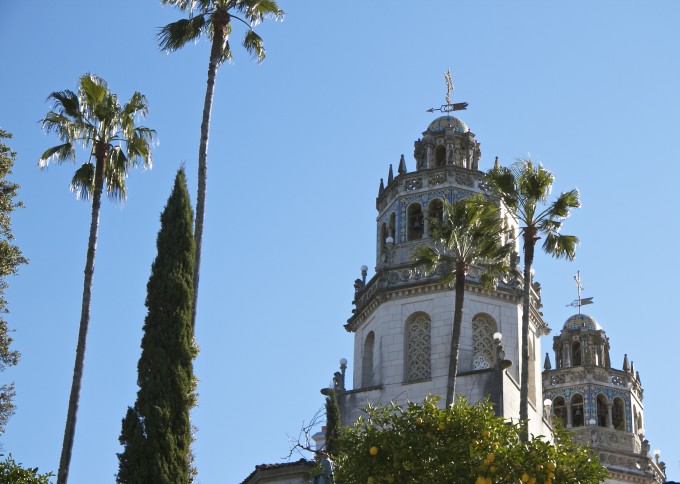
I have a confession. I was born and raised in California, and I’d never visited the iconic Hearst Castle before I moved away 6 years ago. Since our travels are taking us down the Pacific Coast Highway, I was determined to stop in San Simeon and visit the legendary home of the extravagant media mogul, William Hurst. What I didn’t realize is how fascinating of a story his life, and his home would be.
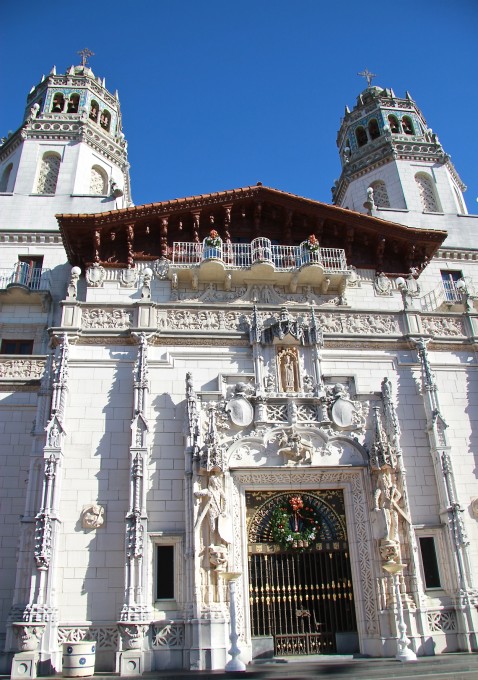
The visitor center and tour guides have so much information available, there’s no way to take it all in in just a day. Here are just a few of the facts I found fascinating about Hearst Castle.
- He was an avid art collector, and his passion was inspired when his mother took him to Europe for 18 months when he was a boy. His collection is worth millions today, one piece is worth $10 million just by itself.
- Much of his collection was acquired after WWI when European towns were selling off parts of buildings that were damaged in the war. He was the largest single collector outside of museums.
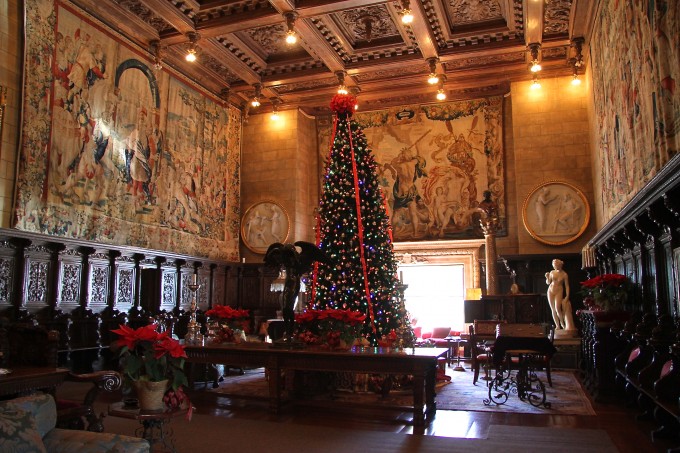
- He picked the spot on the hill to build the house because his dad used to bring him up there as a child on horseback, and it’s his favorite piece of the 250,000 acres he inherited.
- He hired Julia Morgan, one of the 1st women architects of her time, to design the house with him. They worked together for 28 years.
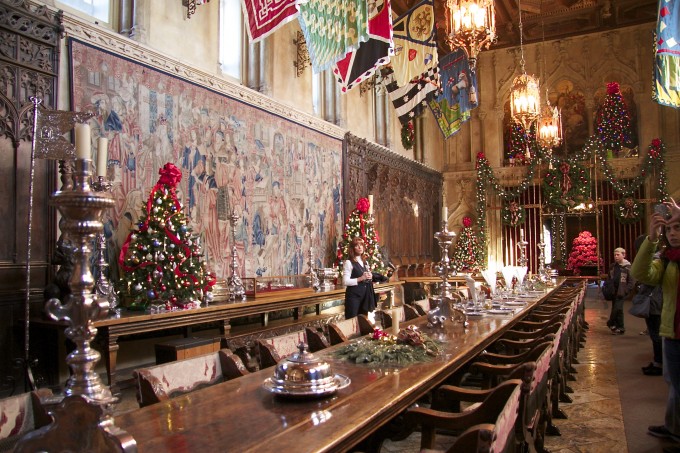
- The house was never completed. One part or another was always under construction. The house still remains unfinished today.
- He preferred the quiet life of the ranch over “ high society”, but he had his newspapers flown in everyday from L.A. He had an airstrip built, and it remains still today.
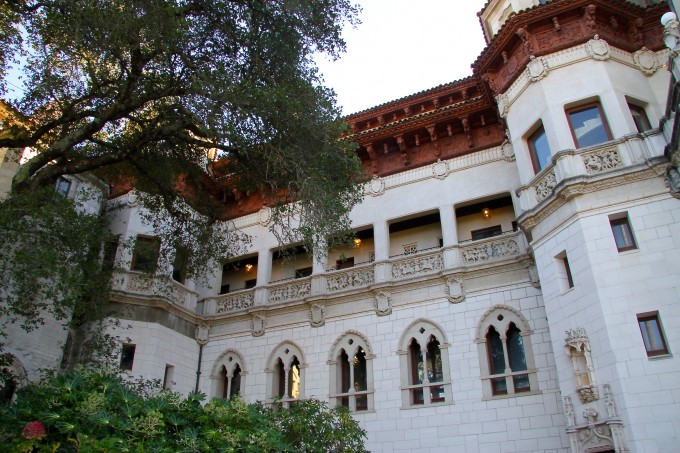
- The house cost around 10 million to build, which is surprisingly lower than it looks with all the details and original structures he had shipped over from other parts of the world, and how many times he had things torn down and redone.
- The Neptune pool was ripped out and redone 3 times. It now holds almost 350,000 gallons of water, and has real Grecian ruins surrounding the perimeter.
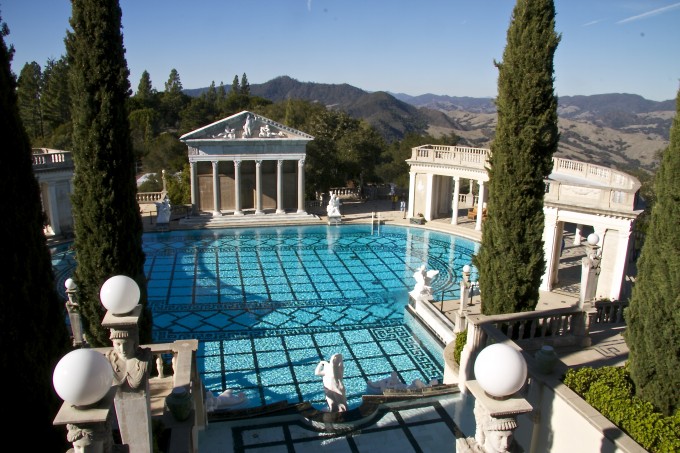
- There are 3 large guest houses on the property. He lived in one during the construction of the main house.
- He had 10 large homes all over the world, this wasn’t the biggest.
- The temperature can change up to 50’ from the coastline up to the top of the mountain. In the summer the coastal fog creates cool temperatures at the visitors center, but once you take the ride above the clouds to the main house on the hill, it’s hot and averages 20-30’ degrees warmer.
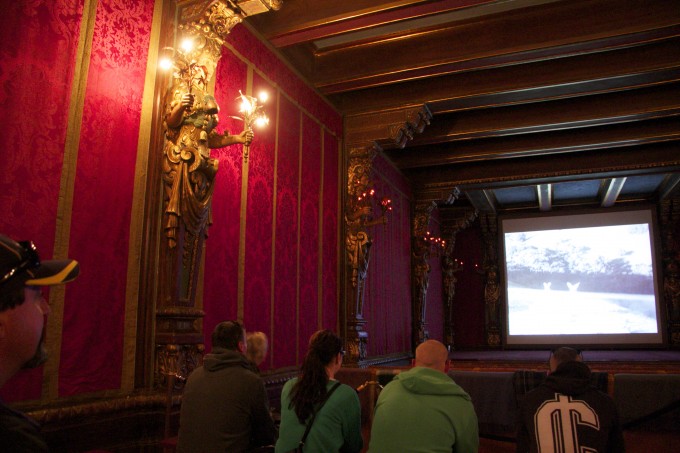
- The surrounding grounds are still a working ranch that the Hearst family owns. Although a big portion was donated to the state of California, it still remains one of the largest ranches today.
- The house was donated to the California State Park system in 1952. Hearst had moved out about 4 years prior due to ill health, and it remained empty for a number of years. Instead of selling off the estate in pieces, the family preserved it by working with the state of California park system.
- There was a zoo on the property. In fact, in it’s prime, it was the largest privately owned collection of animals in the country. The animals were sold off long ago, but the zebra were released on the land, and some of their descendants can still be seen mingling among the cattle on the ranch today.
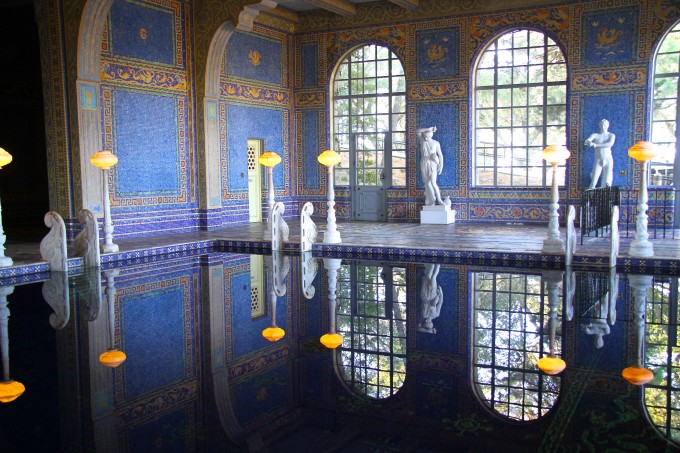
We only got to spend one day at the castle, and we could’ve easily spent a few more and still not get the full impact of Hearst’s legacy. However, I was very pleased at how much we learned in our short visit there. The visitor center has a very educational, entertaining IMAX movie about his life, which gave us a lot of context before we actually toured the house. The tour guide packed a lot of information into our 45 minute tour as well. As we toured the grounds, there are docents posted around the property, ready and willing to answer your questions and give you more detail into the history and legacy of the home and the man.
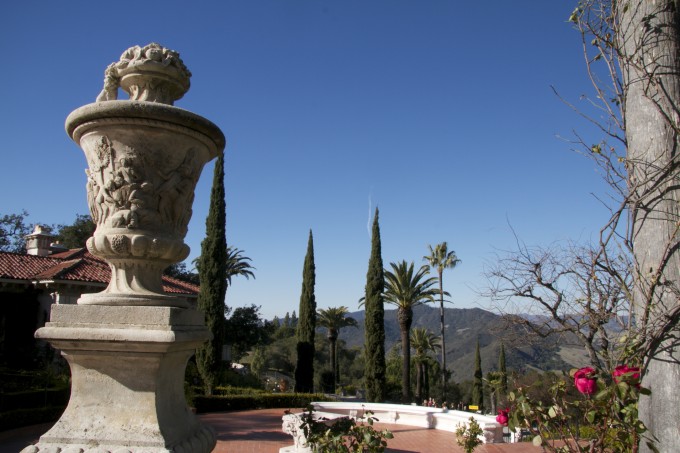
VISITOR TIPS:
1. Reserve your tickets in advance. Each tour is limited in the number of people that can go up the hill on the bus, and in peak seasons tickets might be sold out.
2. Go early in the day before the crowds swell and the weather gets hot.
3. The temperature can change dramatically, like I mentioned earlier, so dress in layers. Wear sunscreen and bring sunglasses or a hat as most of our time will be spent walking the grounds outside.
4. Bring your own food or snacks if possible. You can’t eat at the castle, but you can at the visitors center. They have some good food options there, but it’s pricey, like most tourist destinations.
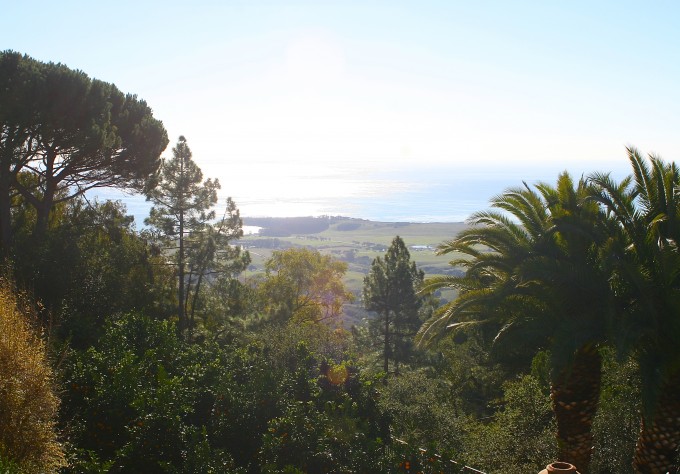
If you’d like to know more history on the Hearst Castle, you can check out the Facts & Stats page.
A tour of the castle is a great blend of education and entertainment, making it a perfect family destination.
So the next time you are in central California, make sure to put Hearst Castle on your list of places to visit.
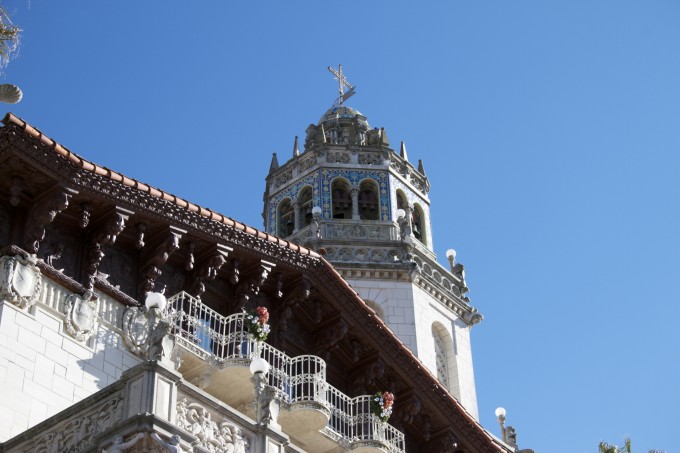
The Sutro Bath Ruins of San Francisco
Exploring Nature in the Big City of San Francisco
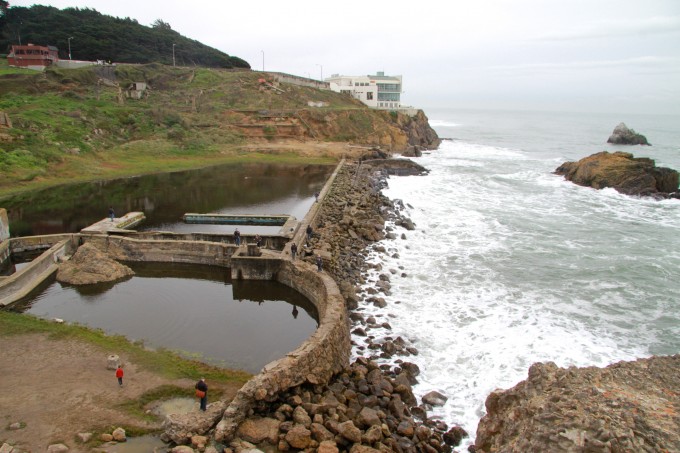
If you’re like me, you like to explore out of the way places, along with some of the popular tourist attractions. This helps give us a more rounded approach to any place we visit. While in San Francisco we contacted a photographer friend who lives just outside the city. Before driving us through downtown San Francisco, he took us to one of his favorite spots along the coast, the Lands End Trails. I hadn’t heard about it during my research of the city, but I’m glad we were introduced to it.

Snuggled inside the Golden Gate National Recreation area are the Sutro Baths and Cliff House. As we pulled into the parking lot I was immediately enthralled with the gorgeous Cypress trees that sit on the bluffs. The fog encircled the branches and created a magical feeling. The grove begged to be photographed, and I’m sure it lures many photographers to capture the ever -changing weather and light amongst the trees.
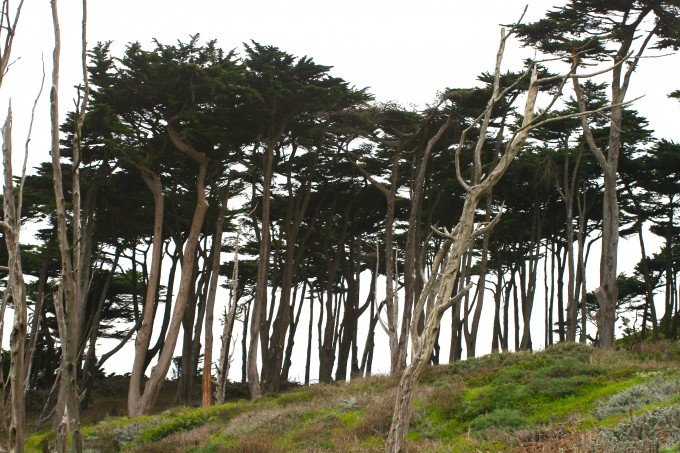
Beneath the trees were walking trails that wound through the groves and along the cliffs. People were visiting this area for many reasons that day; running, biking, photography, and exploring the ruins. There’s a 3-mile trail that loops back, but we didn’t have enough time to explore the whole thing. I definitely recommend allowing a few hours to explore the coastline and all the scenic views this area has to offer. Next time we come to San Francisco, we plan on allotting sufficient time to explore more in depth.
Once we we parked and adequately dressed for the cold, we headed down to the Sutro Bath ruins. There’s a steep staircase that took us from the bluffs down to sea level.
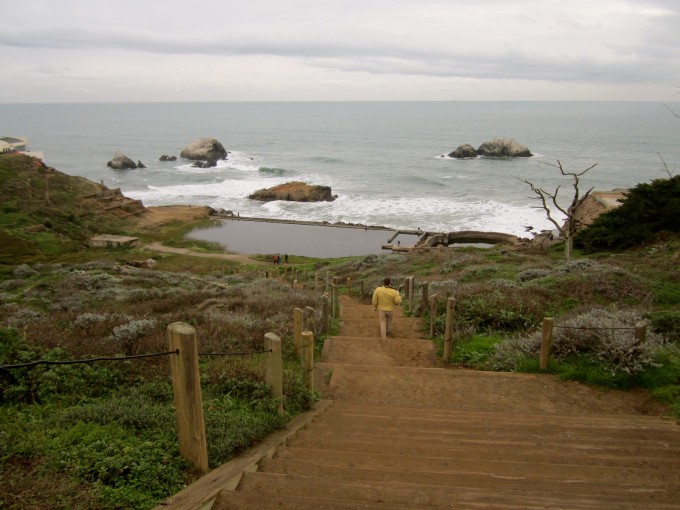
Note: It’s not a walk for the easily fatigued, or those with physical restrictions.
The concrete foundations and walls are accessible to walk on. Pets were allowed so it was great to take Lassie with us down to the waters edge.
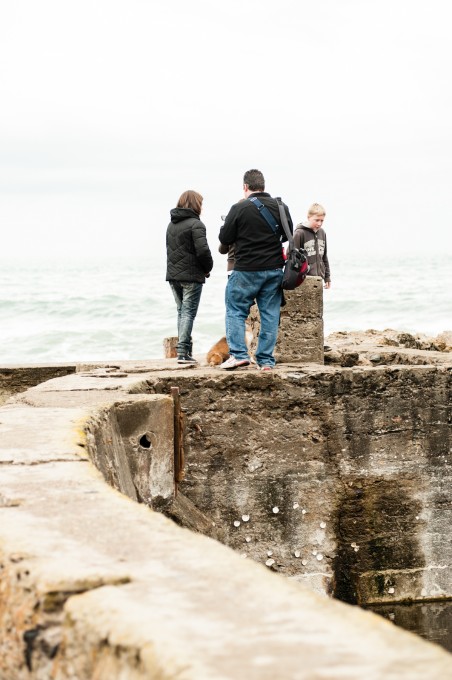
The waves were crashing on the rocks nearby, creating a picture perfect setting, in spite of the chill in the air.
Looking out at the mountains and trees beside us, the water and rocks in front of us, it felt peaceful.we could really sense the history of an era gone by- a time when this place entertained many more guests than the few of us that were there that day.
I can definitely see why in the 1920′s it was selected as a spot to put a bathing house. In it’s heyday it was a glass enclosure with 6 sea and fresh water pools indoors.
Off to one side of the cliffs is a cave, which the kids were thrilled to explore. I found out later that it’s where they housed a turbine to pump sea water into the 6 salt bath enclosures.
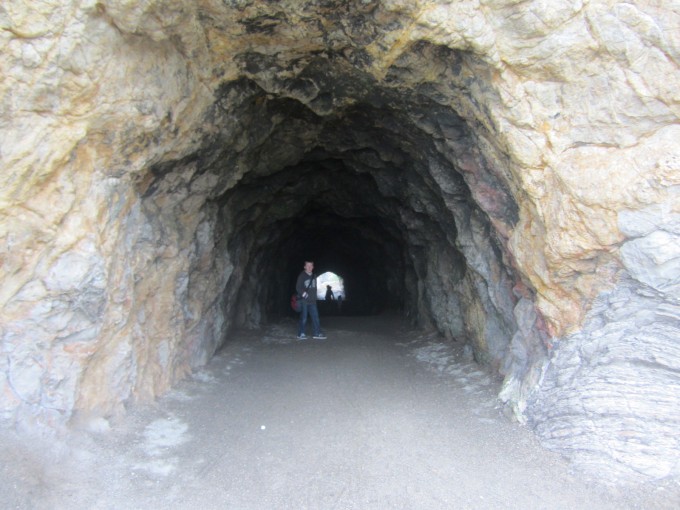
A dirt and asphalt path took us up the side of the cliff so we could get a panoramic view of the bay. If the weather had been clearer, I’ve been told you can see the Golden Gate Bridge from here.

It’s always great when I can find a place that everyone in the family enjoys, and hiking around Lands End was definitely one of them.
There were many photogenic spots, and Hannah & Avery had a great time practicing their photography skills.
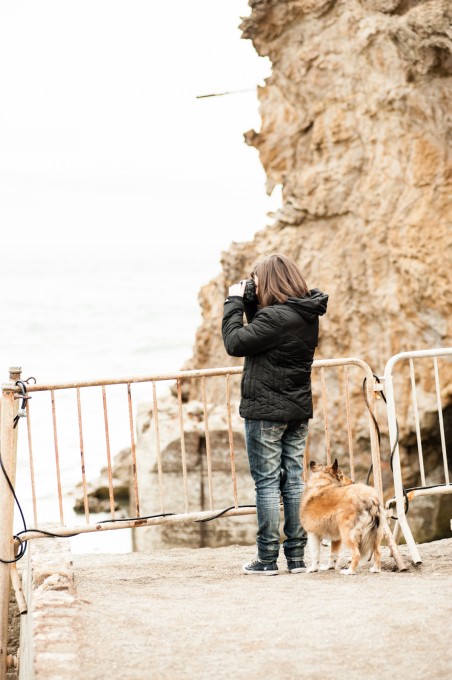
Hayden loved hiking the boulders and throwing rocks out into the ocean. He climbed up the mountainsides and had a great time exploring.
I was pleased to see that it was a pet- friendly place as well. Our dog, Lassie, was happy to run around the ruins and enjoy the scenery.
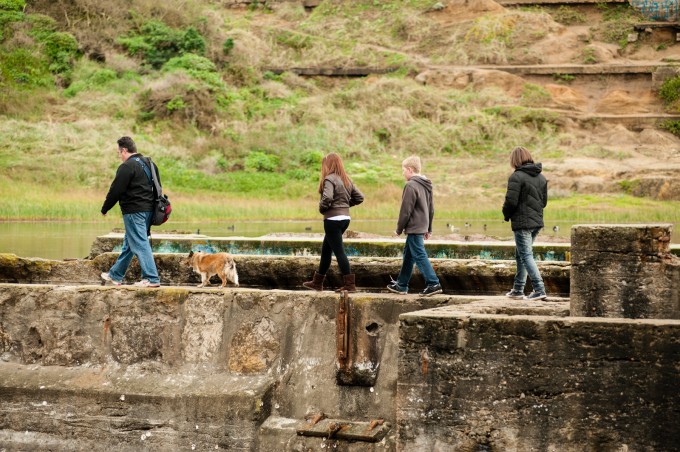
We saw many great sites in San Francisco while we were there, but one of my favorite was definitely the Sutro Baths and Lands End.
I can’t wait to come back in warmer weather, with a picnic lunch and a camera, and spend the afternoon soaking in the scenery.
I recommend you check it out the next time you are in San Francisco. And if you’re looking for a great photographer or local “tour guide”, be sure to call my friend, Spencer Harris, and tell him Watts in the World sent you!
New Column on Everyday Family.com

Part of our alliance with Everyday Family TV included an invitation to write a blog column for their website. I’m excited to join a host of talented women, and add my voice and perspective on family life, travel, our trip, and anything else that inspires me. I’d love for you to join my journey. If you subscribe to our monthly newsletter I’ll include the links to these posts so you can stay updated on what’s happening at Watts in the World.
If you’d like to read my first post, you can check it out HERE.
Here’s a tidbit….
I turned 40 some months back, and hitting that milestone sparked a period of reflection for me that was headed in a bad direction. I began looking at my life’s accomplishments, and in some cases, lack thereof, and I started to spiral into a funk. It felt like such a cliché’, bemoaning my circumstances; the wrinkles & flabby body, my financial choices, the unfulfilled bucket list, etc. If I stayed there a moment longer, this might’ve turned into a post on plastic surgery or an expensive car purchase I’d just made.
Instead, I lay in bed one day and thought. I thought long and hard about what was most important to me. I asked myself a key question, “What one thing would I regret if I didn’t do it?” You probably have that one dream you’ve always wanted to make happen, right? Yeah, me too. And once I was clear about that, I had to then answer, “What was I willing to give up in order to get that one thing?” This, my friends, is how our long term journey across the country in an RV was born.
What’s new at the Denver Zoo
With 3 kids who love animals, we’ve spent more time at zoos in the past decade than most people spend in their lifetime. Currently our oldest daughter is even a docent- volunteer at our local zoo in Utah. So when we got the chance to visit the Denver Zoo, we couldn’t pass it up. Yes, most zoos house just about the same varieties of animals, but we soon discovered Denver has some unique elements that are pushing the boundaries and setting new standards for zoos across the nation. Stimulating, naturalistic environments and eco-friendly operations are just a few of the advances the Denver Zoo is committed to mastering this year. This level of dedication isn’t new to the zoo, in fact, it began over a 100 yrs. ago when the zoo was initially created.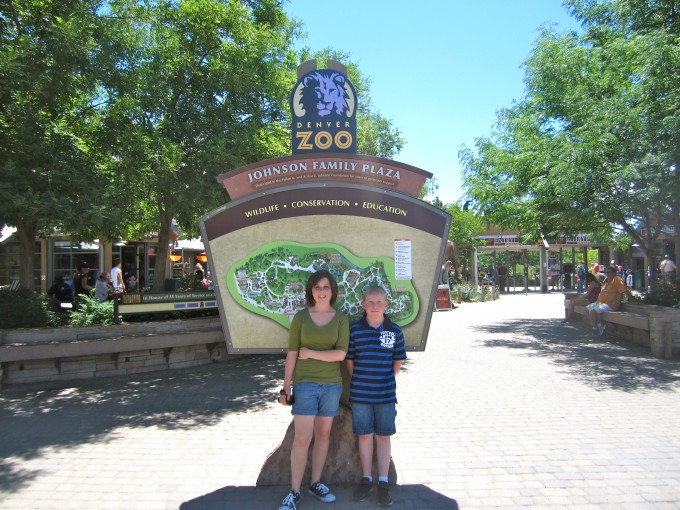
It all began with a special gift to the mayor of Denver back in 1896, a black bear, named Billy Bryan. That was the humble beginnings of what is today one of the most popular zoos in the United States, the Denver Zoo.
What makes this 80-acre facility located in the center of City Park of Denver so unique is the how cutting edge and forward thinking it’s been since its inception. It was the first American zoo to use naturalistic habitats, that was over 100 years ago. Now, it’s utilizing trash and animal waste to power portions of the zoo and create one of the greenest zoo environments in the world. This zoo has consistently been a trailblazer in advancing education and advocacy for animals, and it was a pleasure to see it up close during our visit.
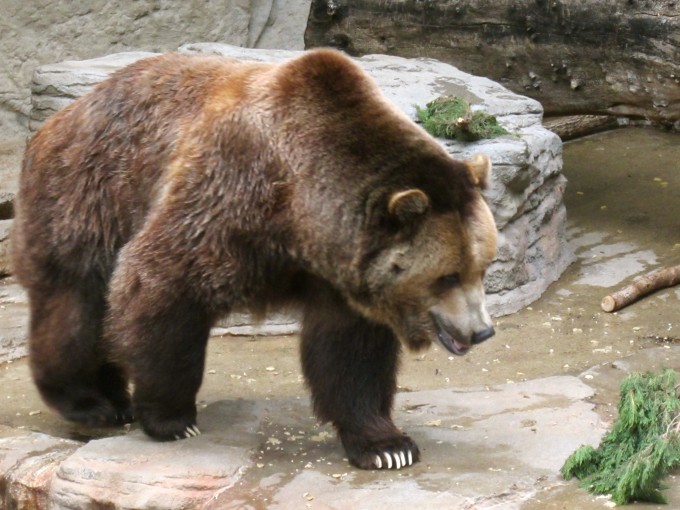
Did you know that when you visit the bear exhibit you are seeing a national historic landmark?
Bear Mountain made history by becoming the first naturalistic habitat of its kind in North America. Its construction was based on giant plaster casts of rock outcroppings from an area near Morrison, Colorado, and was designed to simulate the animals’ natural habitat. It was built over 100 years ago, and still houses animals today.
The award winning Predators Ridge
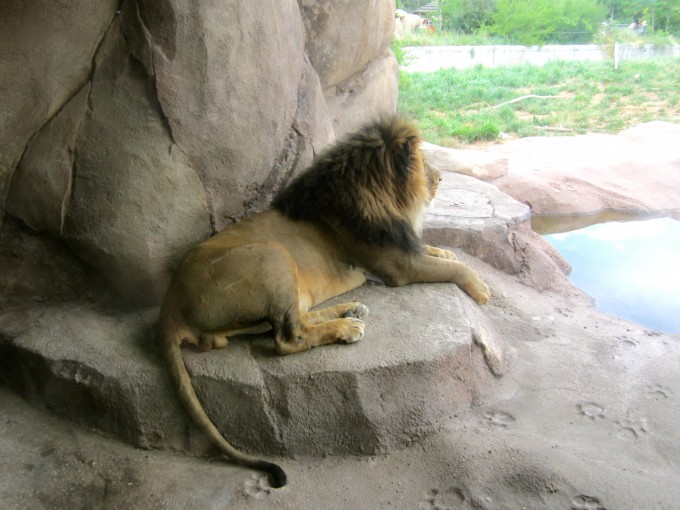
Another example of advances the Denver Zoo is making in the zoo industry is Predator Ridge. Predators Ridge is an example of what accredited zoos nationwide are trying to achieve – larger, more naturalistic and educational exhibits. This exhibit features 10-foot tall mounds for lions to survey their surroundings, electric hot rocks for warmth and a separate maternity den for mothers and future cubs to enjoy. Other native animals like hyenas are rotated through the enclosure to give the lions a more enriching environment. Because of it’s realistic nature this exhibit received awards from the AZA, and remains one of the highlights not to be missed when you visit.
The brand new Toyota Elephant Passage
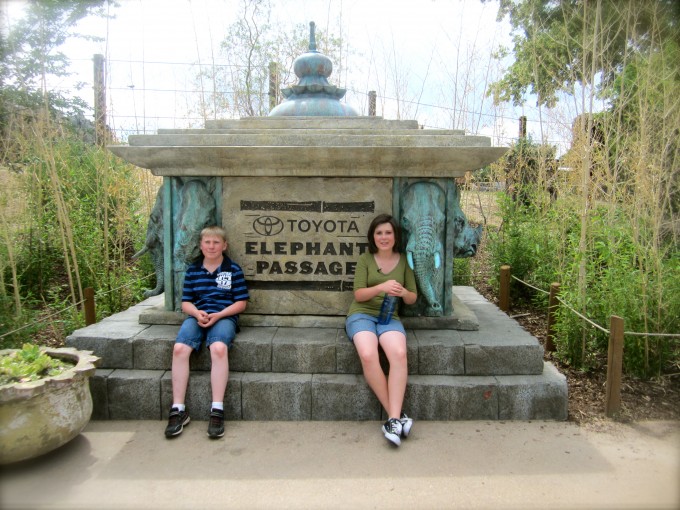
By far, the biggest and most impressive exhibit is the new Toyota Elephant Passage that opened June 2012. It houses 3 elephants and many other Asian species on the 10 acre property. It’s set up in a manner that allows the elephants to rotate through 3 different spaces, giving them a change of scenery and stimulation and freedom to roam that is unprecedented.
Besides the positive impact this new exhibit has on the animals, it’s having a positive effect on the environment as well. The new Toyota Elephant Passage turns human trash and animal waste into energy. The innovative gasification system will convert more than 90 percent of the zoo’s waste into usable energy to power the exhibit, eliminating 1.5 million pounds of trash currently going to landfills annually. Hopefully their example of how to create the best possible environment for the elephants, and save energy doing it will be an example other zoos will follow.
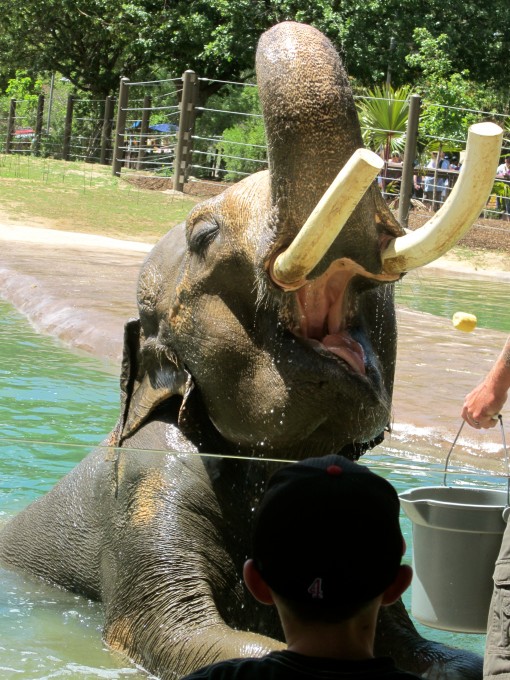
Quick Tips for your visit:
- Go early- The animals are usually more active in the early morning and early evening, so if you want to see them moving around, get there as soon as it opens.
- Map out the live shows first- Some of the animal shows, feedings or live demonstrations are held only once per day, so arrange a plan that ensures you get to see them, and fill in the time between shows with exhibits that are open all day long.
- Feeding Lorikeets- If you’d like to experience the fun of feeding lorikeets from your hand, and have them land on various parts of your body, do this early in the day. They are hungry in the morning, but after eating from the hands of numerous visitors, they are full by the afternoon. My kids loved this when they were little, and it makes for a great photo opportunity as well.
- Stay cool & hydrated- While there are some shady areas to rest and eat a picnic lunch, the majority of the paths are not shaded. Likewise, the sea lion show is in direct sunlight, and there’s no seating- you stand while watching it. Be prepared with hats, sunglasses, perhaps even an umbrella if you are senstive to the sun. Water bottles are $2.50 a piece in the zoo, and you’ll probably need to drink several during the day so plan that into your budget, or bring your own water bottles and refill them as needed.
- Be kind to your feet- As in most zoos, there’s several hills to walk throughout the zoo, and it’s a fairly big distance from one side of the park to the other. Be kind to your feet and wear proper walking shoes. It pains me to see women walking from one exhibit to the next, clearly uncomfortable in their high heels. Forgo making a fashion statement and enjoy your time with the animals.
- Take advantage of the Education available- The zoo’s website has an abundant amount of information available to prepare you for your trip. There’s guides to animal conservation, educational programs for teachers and students, and a teen program for those interested in more in depth knowledge of animals.
So as you can see, if you are in the Denver area, the Zoo is worth the day trip to explore it. It has a lot to offer both young and old, animal lover and environmentalist alike.
Have you been to the Denver Zoo? What was your experience like? What’s your favorite animal exhibit? Leave your thoughts in the comments below~ we’d love to hear from you!
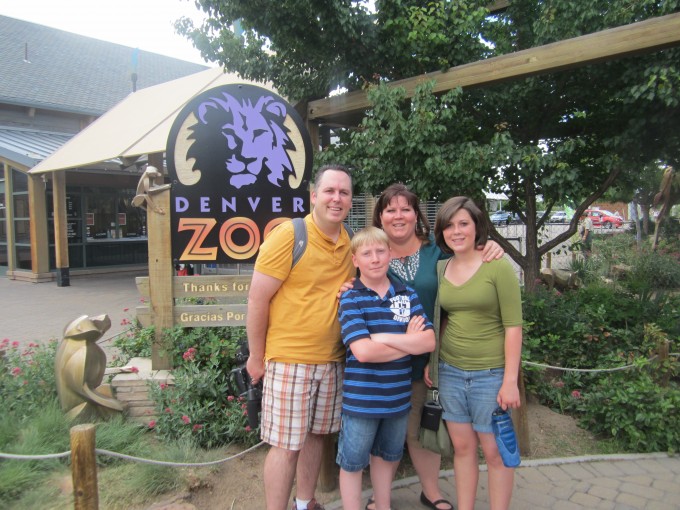
We are grateful to the Denver Zoo staff for their hospitality, and to Visit Denver for arranging the opportunity.
Watt Family Top Travel Adventures- Part 1: Moab Utah
Moab Utah- August 2011
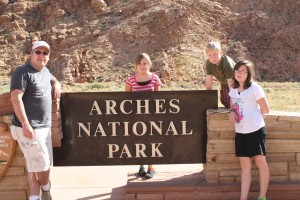
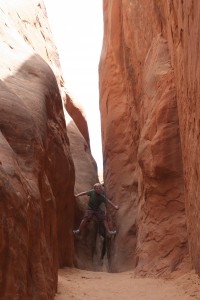 In an effort to document our travels both before the trip, and during it, I’m going to be sharing a series of posts based on our family travels so far, and in no particular order.
In an effort to document our travels both before the trip, and during it, I’m going to be sharing a series of posts based on our family travels so far, and in no particular order.
Also, I’m testing out a new way to make short videos. {Click on the link and let me know what you think!}
Summer break is in full swing starting this week, and I’m sure many of you are thinking about ways to spend your time. I’m scouring the internet myself, looking for adventures that we would like to take.
I have a suggestion for you: Do you want to do something really fun, family friendly, educational and involves being out in nature?
Go to Moab!
The Arches National Park, Zions National Park and Canyonland are some of the most awe-inspiring places I’ve been.
The red rocks, the unique arch formations, winding canyons and warm weather made this a great weekend for us.
Dino is not a hug lover of camping, hiking, and all things outdoors, so he usually complies out of his abiding love for me and the kids. He’s such a good sport, and has earned many brownie points over the years!
Disclaimer: August is probably not the best month to go. The Utah desert gets very hot, and we had to limit our hiking to the early morning and evening times to avoid full blown melt down from the kids.
The sunsets are a-maz-ing, and if you’re even remotely good with a camera, you’ll get some beautiful photos of some of the prettiest landscape in the U.S.
Note to self: Don’t try to take photos of tired cranky kids in the few minutes you are waiting for the sun to set, or you’ll get caught up in bribing them to smile and miss the sunset entirely!
One way to chose to cool off in from the scorching weather was to go on a 1/2 day river rafting trip. I had been when I was a teenager, but the kids never had. They loved it! Fortunately they are all good swimmers, love the water, and weren’t afraid of the rapids.
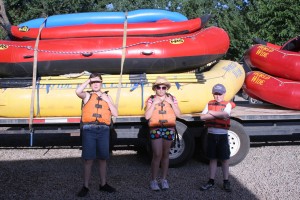
Another tip: If you want higher rapids and a more advanced course, go earlier in the summer or late spring. The water is colder, but the rapids are bigger and faster because of the spring snow melt off.
In August the rapids were lower and slower, but the water was warm enough that the kids could jump out and swim/float along with the boats in between the rapids.
If you have young ones, or are nervous in water, go later in the season.
One of the best parts of traveling is watching my kids make friends and adapt quickly in just about any situation.
It was a proud mama moment- watching my kids be outgoing, social, and take the initiative to solve their own problems.
That’s what I love about traveling- exposing my kids to new people, new experiences, and opportunities to grow and stretch themselves.
For me as a mother, this was the peek of what’s ahead. The beginning of my girls becoming women- independent, strong, courageous ladies who will go out and take on the world. And win.
JAMAICA- Where the seeds were planted
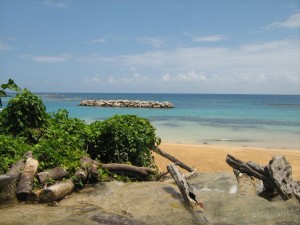
This is where it all began. Back in May of 2008, exactly 4 years ago this week, we embarked on our first international vacation as a family. With freshly minted passports in hand, and a single carry on suitcase, the kids were bursting at the seams to head off on our family adventure in Jamaica. They were terrific travelers, and handled the long flight, long bus ride, and customs check in with ease. I was surprised and relieved that my kids were so adaptable and forgiving of all the bumps in the road that can happen while traveling.
We did the typical tourist route, we stayed in an all-inclusive Beaches resort in Ocho Rios for a week.
The girls go their hair braided.
We spent hours upon hours at the beach, or at the pool. It was heaven.
We were spending intense quality time together as a family, and we weren’t getting sick of each other. Of course the environment we were in helped, but there was something magical about learning, playing, exploring new adventures together that made my heart sing.
We were having a lovely time riding banana boats, kayaking, and snorkeling daily. My kids didn’t spend much time with the other vacationers, they gravitated towards the staff & the locals. They were curious of the culture, the people, and what life was like outside of the resort.
We wanted to see more of Jamaica, but we weren’t brave enough yet to strike out on our own with little kids in a country we weren’t familiar with, so we opted for 2 off property expeditions. We wanted to go tubing down the river in the rain forest, which was in the middle of the island. As we were taken in vans about 2 hours inland, we got to see the “real” Jamaica. How the employees of the resort lived after they left their 9-5 job at the resort.
There were similarities to our life that my kids could identify with; children playing in the street, laughter, dogs barking, older men sitting on their porches watching the days activities. It was Sunday, and the sweet old ladies were dressed in their Sunday best, headed off to church. I will always remember they wore beautiful hats and white gloves, just like my mom did back in the 50′s. It felt like a flashback in time, to a generation I’d only seen in the movies. It was quaint, and I wanted to get out of the bus and go meet these people, and get to know them better. To spend a day in their life and see what we had in common, and what they could teach me.
And then their were aspects of Jamaica my kids weren’t expecting; like the poverty, and poorly dressed children in some parts of town. The half constructed homes of cinder block with no roofs on them that were occupied in spite of it. It was heartbreaking to them and they wanted to know why it was that way. Not knowing enough about the country to offer an intellectual response, I couldn’t give them an answer. I wanted to know more myself.
The sites and sounds and food and people we encountered that week were new, strange, delightful, and fun. It stirred a deep curiosity to see more, to do more for our global brother and sisters; both at home in America, and in other exotic places.
It was this experience that planted the seeds of more travel- more family experiences to uncover the beauty of this earth and its inhabitants.
When we came home we started planning a full time trip around the U.S. in an RV. We were already homeschooling, so education wouldn’t be a challenge. Dino was managing a large investment fund that would finance our travels. Everything seemed to be falling into place.
Then in the fall, the stock market crashed. Our investments were wiped out in the down turn of the economy.
Our travel dreams were squashed.
It took us a few years to rebuild our life, and during that time our dream lay dormant. The kids would often talk about Jamaica, and how they wished we could go back. Or at least travel somewhere new. The travel bug had bitten them as well, and they wanted to get out on the open road. Dino and I just couldn’t see how we’d make it happen. We’ve had a few trips since then, Bahamas, Cancun, Southern California, and other domestic jaunts, but none have quenched the thirst for long term exploration.
As we were building up our business, we met someone in our same field of work as a coach and author, and she was living our dream of full time RV life with her family. She gave us some tips of how we could do it as well. Immediately the spark was reignited. This time it wouldn’t be extinguished.
The more research I did, the more confidence I got. The resources available online are amazing. People are so generous with their information and support. We could see a path for making this lifestyle a reality.
Our dream became non-negotiable.
The seeds planted back in 2008 in Jamaica had sprouted in our minds, and the roots grew deep into our hearts.
We had to convert our dream into reality. And so our journey begins.
Do we have all the details narrowed down? No. Do we have all the funds secured? No. Does it feel extremely vulnerable to announce your cause-movement-advneture to the world without all the answers? Absolutely. And yet here we are. Unable to contain our passion, we are declaring our intention and come what may.
A lot has happened in our lives since May 2008, but one thing has remained a constant, when we align ourselves with our passion, God works out the details. We are in his hands from now until departure day.


